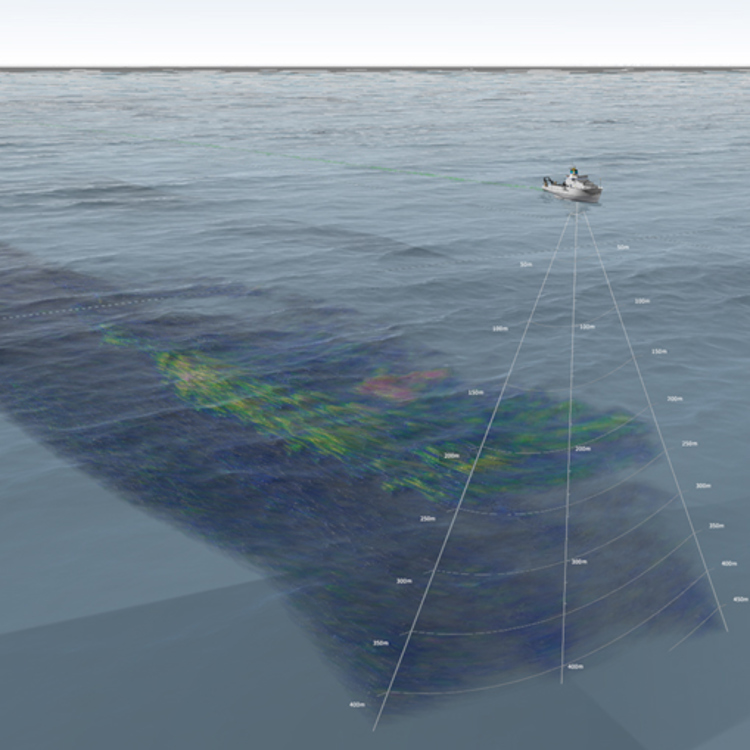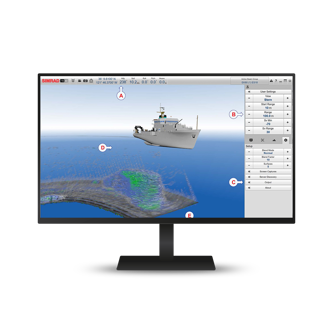
ME70
Scientific multibeam echo sounder
The ME70 multibeam produces scientific-quality quantitative data and offers high operational flexibility. It provides a configurable wide fan of stabilised and calibrated beams with low sidelobes using a fully populated array, providing the best water column data for marine quantitative applications.

Not just an ordinary multibeam echo sounder
You can select the directions, frequencies, and opening angles for the beams in the ME70 within the transducer's bandwidth, the limits for beam steering, and the minimum achievable beam opening.
The system configuration can be tailored to any user's requirements, allowing for the choice of beamwidths and transmission modes. A real-time display provides quality control of the current data acquisition.
Low sidelobe levels and beam crosstalk
Low sidelobes are key to ensuring the highest water column data quality. They allow for measurement further than the minimum slant range, where data would otherwise be compromised by the bottom echo seen in secondary lobes. They also prevent strong targets in secondary lobes from being mistaken for weak targets in the main lobe.
Calibration
The ME70 system implements a calibration utility as a special built-in function. Each beam configuration of interest can be calibrated using a reference target (sphere) deployed under the ship. Individual beam parameters are adjusted for calibrated target strength and volume backscattering strength measurements interface.
Key features
- Fully configurable fan
- Quantitative measurements
- 3 to 45 stabilised calibration split beams
- Operating frequencies 70-120 kHz
- Very low sidelobe levels and beam crosstalk
- Calibration software included
Current software version
We recommend that you always keep your system updated with the latest software version.
All applicable information related to this software release can be found in the Software release note.
Current software version is
24.5
Stay updated!
Sign up to be notified when we update our Ocean Science products.
Product range
Get in touch!
In addition to our many offices around the world, our global dealership network enables distribution to more than 100 countries to meet customer needs at any location. Find your local dealership or Kongsberg Discovery office here.
We offer comprehensive after-sales assistance
-
24/7 Technical support
Our Technical Support team is readily available to provide global 24/7 support and can respond to resolve any issues at any time, wherever you are located in the world.
-
Training
We can provide detailed training on the use of our products to ensure your crew is equipped with the necessary operational competence to minimise technical risk and maximise return on your asset investment.


